Imperial Citadel Of Thang Long To Explore Vietnam’s Heritage In 2026
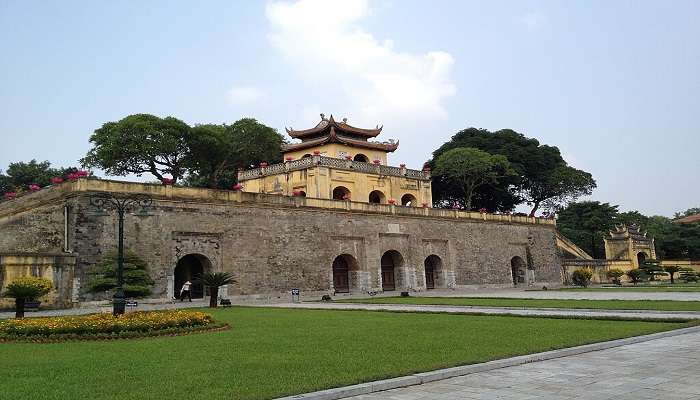
The Imperial Citadel of Thang Long is a worth-visiting masterpiece, especially for architecture enthusiasts and historians. This historical monument, named the Imperial Citadel of Thang Long, stands strong, holding a historical value since the 11th century. It was inscribed in the World Heritage list by UNESCO’s World Heritage Committee in 2010 and is one of the ten special national heritage sites as declared by the Prime Minister in 2009. Beyond its formidable walls lies a chronicle of centuries where every stone seems to whisper tales of triumph and tribulation. As you step through the hallowed halls and ancient ramparts, the structure will leave its indelible imprint in your mind.
History Of The Imperial Citadel Of Thang Long
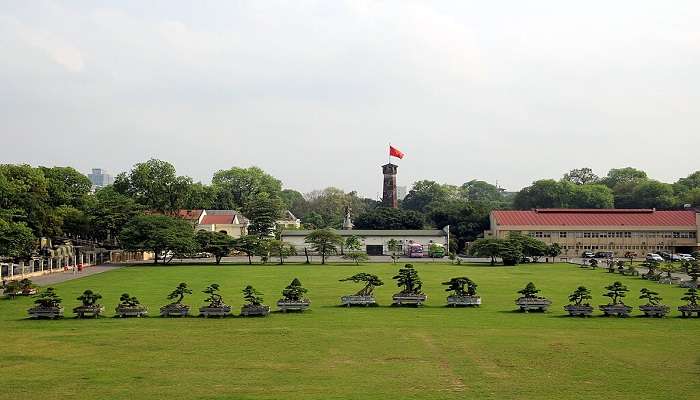
The construction of the Imperial Citadel of Thang Long began as early as 1010 and was completed by 1011 during the ruling period of Ly Thai To (from the Ly Viet Dynasty). It is located in the city capital of Vietnam, Hanoi, and was constructed on the drained, reclaimed land of the Red River Delta as a mark of the Dai Viet’s independence. Built on the Chinese fortress, it symbolises power and victory.
The Imperial Citadel of Thang Long served as the centre of regional political power for an uninterrupted period of almost 13 centuries. The building of the Imperial Citadel and the remains in the 18th Hoang Dieu Archaeological site are a unique reflection of Southeast Asian culture, specifically of the lower Red River valley. It was designed to consider the cultures of China, which is from the north, and the ancient kingdom of Champa, which is from the south. This palace is prominent in intercultural exchanges between China (from the North) and the kingdom of Champa (from the South). This unique crossroads gave rise to a unique culture that spread over the lower Red River Valley. The Vietnamese population established near the Delta region has witnessed this culture since the 7th century.
Must Read: Temples In Vietnam
Virtual Tour Of Imperial Citadel Of Thang Long
Let us take you on a virtual tour through the Imperial Citadel and see what it offers you.
1. The Main Gate (Doan Mon)

The main gate, or Doan Mon, has a U-shaped structure constructed with stones and bricks. Here are 5 gates that are symmetrically placed along a central axis and are often referred to as the ‘righteousness axis’. Doan Mon is positioned to the south and is aligned with the Hanoi Flag Tower. The main architectural part of this entrance gate follows the traditional ‘watchtower gazebo’ style with three rolling arches.
These curves gracefully act as an excellent load-bearing structure. During the Ly Dynasty, the primary materials used for its construction were wooden hammer bricks and rocks, which were very famous during that period.
Suggested Read: Places to visit in Hanoi
2. Northern Gate (Cua Bac)

Situated on Phan Dinh Phung Street, Cua Bac (The northern gate of the Imperial Citadel of Thang Long) was built in 1805 and is the only remaining gate under the Nguyen Dynasty. Following the watchtower gazebo architecture style, this gate is built with wooden frames of eight roof styles and four gates in one direction each.
The gate was designed so that the imperial troops could observe all the movements inside and outside the citadel or those of the enemy. The tower is currently being restored partly to worship the two province chiefs of the Hanoi citadel (namely Nguyen Tri Phuong and Hoang Dieu) who sacrificed their lives while protecting the citadel from the French army’s assault. Scratches, bullet holes, and many other marks symbolise bravery that the Northern Gate witnessed. It has been a great attraction for the visitors across the globe.
3. Kinh Thien Palace
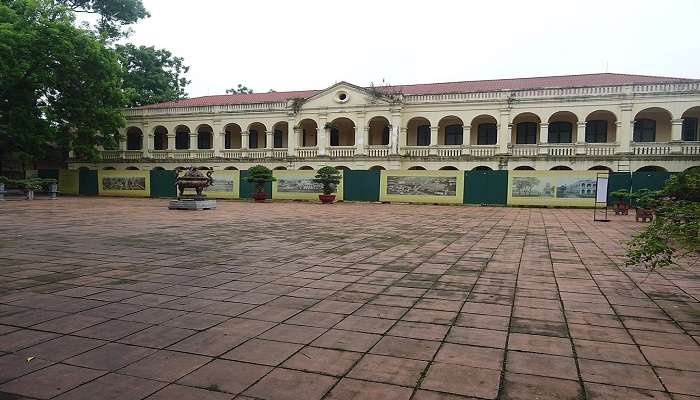
This palace holds a very prominent place in history. Here, King Le Thai To ascended to the throne in 1948, and later, the building was used for significant court ceremonies, the reception of foreign dignitaries, and vital national affairs discussions. Throughout history, Kih Thein Palace has held a central role in the Imperial citadel of Thang Long. According to ‘The Complete History of Dai Viet’, the construction of Kinh Thien Palace started in 1428 under the kingship of King Le Thai To and was completed under the kingship of King Le Thanh Tong.
This structure underwent many architectural changes but still retains the essence of the Le Dynasty. In 1788, King Quang Trung used it as the headquarters of the Northern Citadel. In 1805, King Gia Long ordered the area’s building as the royal step-over palace for the Nguyen Kings. At the end of the 19th century (during French domination), the French colonists destroyed the royal step-over palace to build artillery headquarters and named it the Dragon Courtyard.
Suggested Read: Hanoi Museums
4. Hanoi Flag Tower
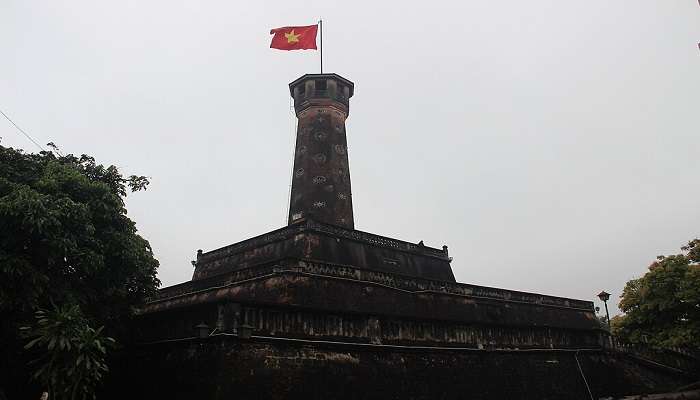
The Hanoi flag tower was built in 1812 under King Gia Long’s kingship. Situated on Dien Bien Phu Street, this tower marks the southern beginning of Thang Long Imperial Citadel. This is one of those buildings that were fortunate enough not to be destroyed by the French administration during 1894 and 1897. The flag on Hanoi tower was hoisted for the very first time on 10th October 1954 and was recognised as a historical monument in 1989. This red flag with a yellow star is almost 200 years old and has been a symbol of pride and glory of independence since then.
Facts About Imperial Citadel

Thang Long Imperial Citadel was designated as a World Heritage site by UNESCO’s World Heritage Committee in 2010. Even during the hottest days in Hanoi, the Flag Tower remains cool inside. The structure of the Hanoi flag tower is designed to prevent rainwater from entering even during heavy rain. It is open from 8 am to 5 pm year-round. It is recommended to visit from 8 am to 9 am due to fewer crowds. The entrance fee is $1.3 per person; children under 16 years of age are allowed in for free. Additionally, students with an approved ID card can enter for $0.65 per person.
Nearby Attractions
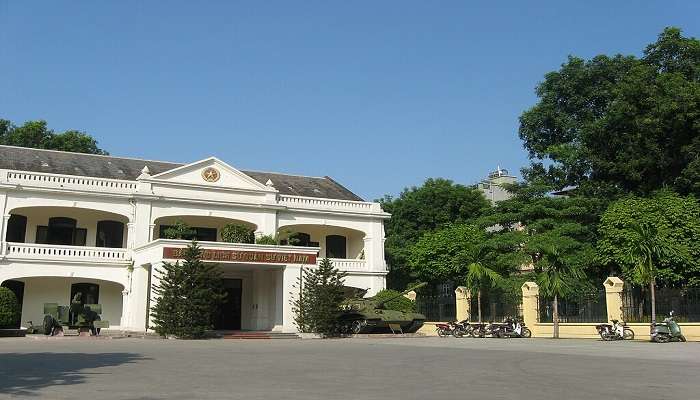
The Hanoi Flag Tower is a short 0.3 km stroll from the Vietnamese Women’s Museum while Building D67 is a mere 0.2 km away. Additionally, the Vietnam Military History Museum is also conveniently located just 0.3 km from the Vietnamese Women’s Museum.
Suggested Read: Best beaches in Vietnam
Nearby Restaurants/Cafes

- Aira Sky Bar and Restaurant: Enjoy a stunning view while dining at this upscale establishment.
- Dream Beans Coffee: Grab a delicious cup of coffee or kick back and relax in this cosy café.
- Viet Rice Essence: Indulge in the authentic flavours of Vietnamese cuisine at this inviting restaurant.
- SushiLAB: Savour the freshest and most creative sushi creations at this trendy sushi spot.
- Heritage Coffee Restaurant: Experience the rich and robust flavours of heritage coffee traditions at this charming eatery.
Further Read: Beaches In Hanoi
Step back in time and immerse yourself in the historical splendour of the Imperial Citadel of Thang Long. From its grand architecture to its rich cultural significance, this UNESCO World Heritage site offers a captivating glimpse into Vietnam’s storied past. Surrounded by greenery, this place holds history, architecture, and culture all together to be told to all its visitors. It takes you through a journey that you will always remember on your trip to Vietnam.
For our editorial codes of conduct and copyright disclaimer, please click here.
Cover Image Credit: Phan Minh Tuấn for wikimedia commons
Frequently Asked Questions About Imperial Citadel Of Thang Long
What are the main attractions within the Imperial Citadel Of Thang Long?
Key attractions near this citadel are Hoan Kiem Lake, Ngoc Son Temple, Womens Museum, and St Joseph's Cathedral are some of the nearby attractions that you can visit.
What are the operating hours of the Imperial Citadel?
The Imperial Citadel of Thang Long is open from 8:00 AM to 5:00 PM every day. It is best if you visit this monument early in the morning to avoid crowds.
Which are the famous places to visit in Hanoi?
The Old Quarter, Ho Chi Minh Mausoleum, Opera House, Hoan Kiem Lake and One Pillar Pagoda are some of the famous places in Hanoi.
How far is the Imperial Citadel from the airport?
Citadel is about 29 kilometres from the Noi Bai International Airport in Hanoi and can be reached via bus or taxi.
Which are the best beaches in Hanoi?
Bai Chay Beach, Do Son Beach, Thinh Long Beach and Tuan Chau Beach are some of the famous beaches to visit in Hanoi.
People Also Read:
Han Market Da Nang Cu Chi Tunnel In Vietnam Dragon Bridge In Vietnam

Passionate Marketing Student with a flair for storytelling, eagerly embarking on a journey within the vibrant world of travel. Excited to merge analytical acumen with creative skills to elevate the editorial landscape of the travel industry.











